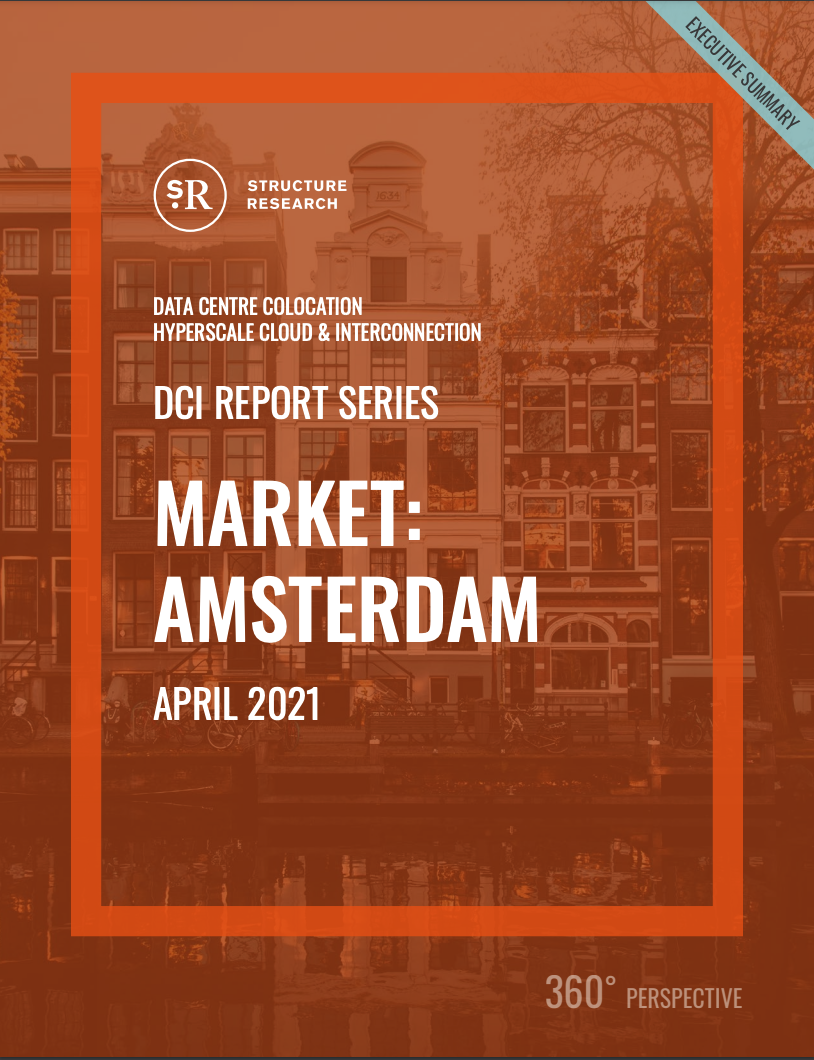Amsterdam is one of the top four data centre markets in Europe — colloquially known as FLAP — and maintains a steady growth trajectory as hyperscale requirements continue to drive demand. In 2020, the Amsterdam market generated US$1.4 billion in data centre colocation revenue and is projected to grow at a five-year CAGR of 12%. Absorption rates are high in Amsterdam as new inventory coming online is already pre-committed and filled up in short order.
Hyperscale demand is not the only driver of this tighter supply and demand profile. The Amsterdam market has been faced with a moratorium on data centre development amid local government concerns around the environmental impact of data centres and the use of valuable land resources in a small coastal area. This has placed restrictions on how much capacity can come online in a year and moved data centre development to designated zones in the greater Amsterdam market. Looking out long-term, this could eventually drive data centre development into second tier markets across the Netherlands or in some cases, to neighbouring countries like Belgium and Germany or even nearby France.
The other important dynamic in play in the Amsterdam market is the prevalence of self-builds by hyperscalers in the Netherlands. Google, Microsoft and Facebook all have built data centres internally and opted not to use colocation, while Amazon’s latest renewable energy project is in the Netherlands. AWS has shown a propensity to self-build near large renewable energy resources that it has procured and it could be headed down this path at some point sooner than later. Notably, AWS is the one hyperscale cloud platform that does not yet have in-country cloud infrastructure regions in the Netherlands. In short, the higher volume of self-build activity in the Netherlands has moderated growth in Amsterdam when compared to its FLAP cousins London and Frankfurt.
The dynamics around self-builds, renewable energy and build moratoriums have shaped the current landscape and will continue to have an impact in the subsequent years. But Amsterdam remains an important market with plenty of advantages. Amsterdam has a long history as a strategic connectivity hub — it is home to the Amsterdam Internet Exchange (AMS-IX) and various subsea cables land here — and is viewed as an attractive destination for business. The central location on the coast of Europe and proximity to other key markets is another selling point. Amsterdam also has favourable power pricing when compared to other European countries. Before hyperscale clouds started landing in Europe, for many of these reasons, Amsterdam was the most popular continental European destination for US and UK-based cloud and hosting providers looking to expand and serve European end users.
This report is an excellent resource for any service provider, investor or enterprise end user looking to understand and project the data centre market in Amsterdam or find a service provider.
